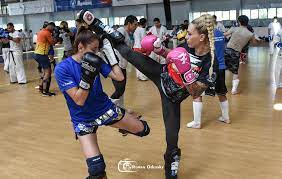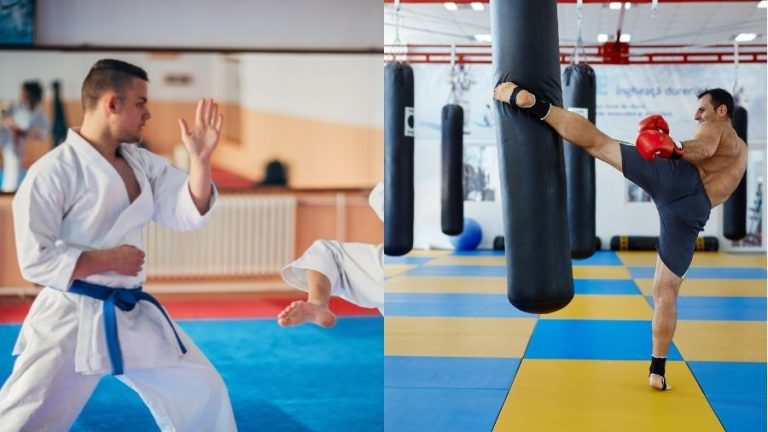Kickboxing vs Muay Thai vs Boxing: Unveiling the Differences and Similarities
Introduction
When it comes to combat sports, kickboxing, Muay Thai, and boxing are three popular disciplines that have captivated enthusiasts around the world. Each of these sports offers its unique blend of techniques, strategies, and rules, making them exciting and engaging for both participants and spectators. In this article, we will delve into the intricacies of kickboxing, Muay Thai, and boxing, exploring their similarities and differences while shedding light on their individual characteristics. Whether you’re a fan, a practitioner, or simply curious about these combat sports, read on to gain a deeper understanding of kickboxing, Muay Thai, and boxing.
Understanding Kickboxing
What is Kickboxing?
Kickboxing is a combat sport that combines elements of traditional boxing with various kicking techniques. It emerged in the 1960s and gained popularity as a full-contact martial art. Kickboxing allows fighters to strike using punches and kicks, employing both arms and legs for offensive and defensive maneuvers.
Origins and History
The origins of kickboxing can be traced back to Japan, where it developed as a hybrid martial art blending karate and Muay Thai techniques. In the 1970s, kickboxing spread to the United States and Europe, evolving into different styles and rule sets. Over the years, kickboxing has become a recognized sport with multiple organizations promoting competitions worldwide.
Rules and Regulations
Kickboxing competitions are governed by specific rules and regulations that vary depending on the organization and style. Typically, fighters are prohibited from using strikes below the waist, such as low kicks or knee strikes. Clinching and grappling are generally limited, with an emphasis on continuous striking exchanges.
Techniques and Skills
In kickboxing, fighters utilize a wide range of techniques, including punches, jabs, hooks, roundhouse kicks, front kicks, and sidekicks. The sport demands a balance between offensive and defensive skills, requiring participants to develop agility, timing, accuracy, and power in their strikes.
Exploring Muay Thai
The Art of Eight Limbs
Muay Thai, also known as “The Art of Eight Limbs,” originated in Thailand and has a rich history dating back centuries. This combat sport focuses on utilizing eight points of contact: fists, elbows, knees, and shins. Muay Thai is characterized by its devastating strikes, fluid movements, and strategic clinching techniques.
Historical Background
Muay Thai’s roots can be traced to ancient warfare in Thailand, where soldiers would employ these techniques in close combat. Over time, it evolved into a sport and cultural tradition deeply embedded in Thai society. Today, Muay Thai is practiced globally and revered for its effectiveness as a self-defense system and as a competitive sport.
Muay Thai Rules and Regulations
In Muay Thai bouts, fighters engage in five three-minute rounds, with a minute of rest between each round. The sport permits the use of punches, kicks, elbows, and knee strikes, making it a highly versatile and dynamic martial art. Clinching plays a crucial role in Muay Thai, allowing fighters to control their opponents and deliver devastating knee strikes.
Fundamental Techniques
Muay Thai fighters master a range of techniques, including the powerful roundhouse kicks, devastating knee strikes, sharp elbow strikes, and punches. They also develop exceptional clinching skills to control and strike their opponents from close quarters. Conditioning plays a vital role in Muay Thai training, as fighters build strength, endurance, and flexibility to withstand intense battles.
Unveiling Boxing
The Sweet Science
Boxing, often referred to as “The Sweet Science,” is a combat sport that focuses exclusively on punches. It originated in ancient civilizations and has evolved into a highly technical and strategic discipline. Boxing matches typically involve two opponents who rely on head movement, footwork, and precise punching techniques to outwit and defeat each other.
Historical Evolution
Boxing has a rich history, with evidence of its existence dating back thousands of years. It was popularized in the 18th and 19th centuries in England, and its modern form, with standardized rules and weight divisions, emerged in the late 19th century. Boxing has been a prominent Olympic sport since 1904 and continues to captivate audiences worldwide.
Rules and Regulations
Boxing matches are governed by strict rules that regulate the conduct of fighters in the ring. The sport allows punches only, with specific target areas, such as the head and body. Fighters aim to accumulate points through clean and effective punches while avoiding their opponent’s strikes. Clinching is generally discouraged and quickly separated by the referee.
Punching Techniques and Defensive Strategies
Boxers master various punching techniques, including jabs, crosses, hooks, and uppercuts. These techniques are executed with precision, speed, and power, requiring fighters to develop exceptional hand-eye coordination and timing. Defensive strategies, such as slipping, bobbing and weaving, and parrying, enable boxers to evade incoming punches and protect themselves.
Differences between Kickboxing, Muay Thai, and Boxing
Range of Techniques
While kickboxing and Muay Thai both incorporate kicks and punches, kickboxing typically allows a broader range of kicking techniques, including spinning kicks and jumping kicks. Muay Thai, on the other hand, emphasizes the use of elbows and knees, setting it apart from kickboxing and boxing.
Use of Clinching and Grappling
Clinching and grappling play a significant role in Muay Thai, allowing fighters to control their opponents, deliver knee strikes, and set up sweeps or throws. In kickboxing and boxing, clinching is limited, focusing more on striking techniques.
Leg Strikes and Kicks
Muay Thai places a strong emphasis on leg strikes and kicks, utilizing techniques such as roundhouse kicks, leg sweeps, and low kicks. In kickboxing, leg strikes are also prominent, but the techniques used may vary depending on the specific style or rule set. Boxing, on the other hand, restricts strikes solely to punches.
Cultural and Traditional Elements
Muay Thai holds deep cultural and traditional significance in Thailand. It incorporates various rituals and ceremonies, such as the “Wai Kru” dance performed before a fight. Kickboxing and boxing, while they may have their traditions, do not possess the same level of cultural significance as Muay Thai.
Similarities between Kickboxing, Muay Thai, and Boxing
Focus on Striking
All three combat sports share a primary focus on striking techniques. Whether it’s punches, kicks, elbows, or knees, kickboxing, Muay Thai, and boxing prioritize the art of delivering effective and powerful strikes.
Importance of Footwork
Footwork is a crucial aspect of all three disciplines. Proper footwork enables fighters to maintain balance, create angles, evade attacks, and generate power in their strikes. Mastery of footwork is essential for success in kickboxing, Muay Thai, and boxing.
Physical Conditioning and Fitness
Competing in kickboxing, Muay Thai, or boxing requires excellent physical conditioning and fitness levels. Fighters must develop strength, endurance, agility, and flexibility to withstand the demanding nature of these combat sports.
Mental Discipline and Strategy
Kickboxing, Muay Thai, and boxing demand mental discipline and strategic thinking. Fighters must analyze their opponents, anticipate their moves, and make split-second decisions to exploit weaknesses and capitalize on opportunities.
Conclusion
Kickboxing, Muay Thai, and boxing offer unique experiences and challenges within the realm of combat sports. While kickboxing showcases a blend of punches and kicks, Muay Thai incorporates devastating strikes and clinching techniques, and boxing focuses solely on the art of punching. Each discipline has its own rules, techniques, and cultural significance, captivating both participants and spectators worldwide. Whether you’re drawn to the versatility of kickboxing, the fierce strikes of Muay Thai, or the technical brilliance of boxing, these combat sports continue to shape the world of martial arts.







